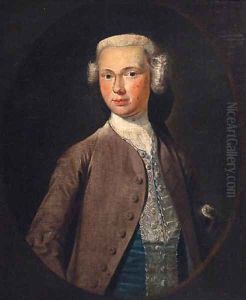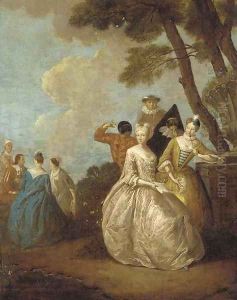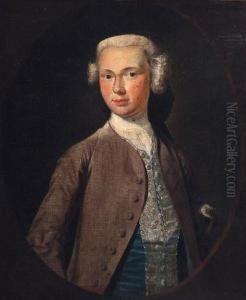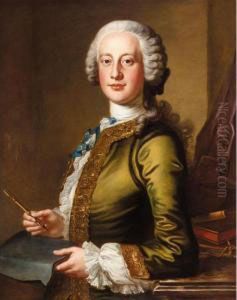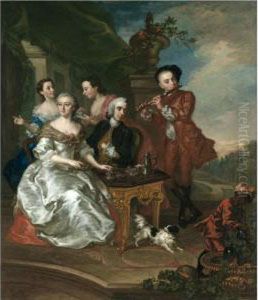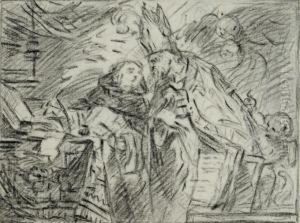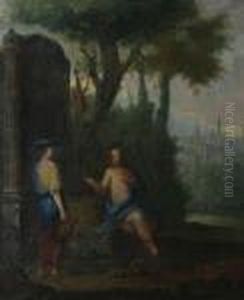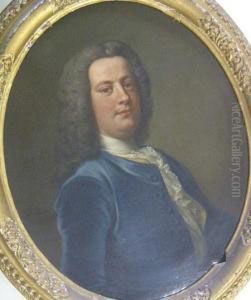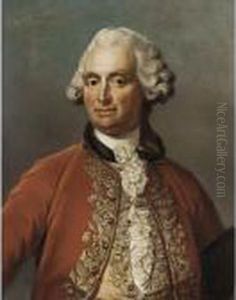Petrus Johannes Van Reyschoot Paintings
Petrus Johannes Van Reyschoot, born in 1702, was a Flemish painter known primarily for his works in the Rococo style, which was prevalent in Europe during the 18th century. Van Reyschoot was a versatile artist, skilled in painting portraits, still lifes, and genre scenes. His works are characterized by their decorative elegance and often contain elements of playfulness and wit.
Van Reyschoot was a part of a family of artists, which included his brother, Martin-Joseph Van Reyschoot, who was also a painter. This familial connection may have provided the formative environment for his artistic development. Little is known about Petrus Johannes' early life, but it is presumed that he received his initial training from family members or local artists in his hometown.
Throughout his career, Van Reyschoot enjoyed a degree of success and worked for various patrons, including members of the aristocracy and the church. His ability to adapt to the tastes of his clients and his proficiency in different subjects allowed him to maintain a steady career.
Despite his accomplishments, Petrus Johannes Van Reyschoot did not achieve the lasting fame of some of his contemporaries. Nevertheless, his works provide valuable insight into the artistic trends and cultural milieu of the Flemish region during the 18th century. Today, examples of his art can be found in museums and private collections, offering glimpses into the Rococo style's influence on Flemish painting.
Van Reyschoot passed away in 1772, leaving behind a body of work that continues to be appreciated by art historians and enthusiasts for its charm and historical significance.
